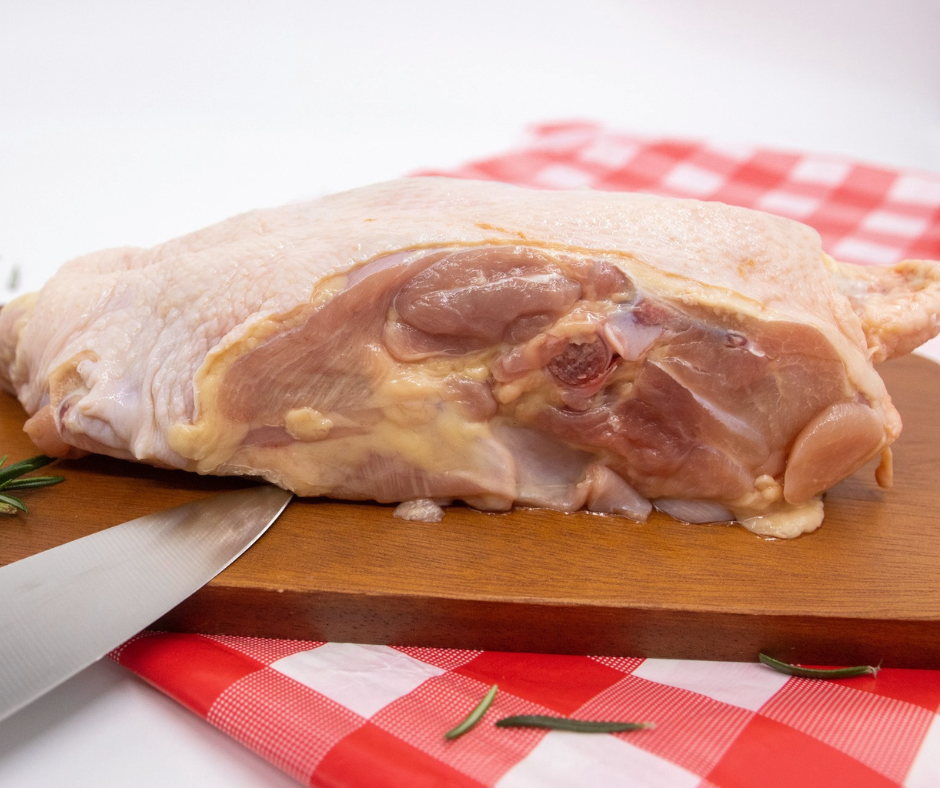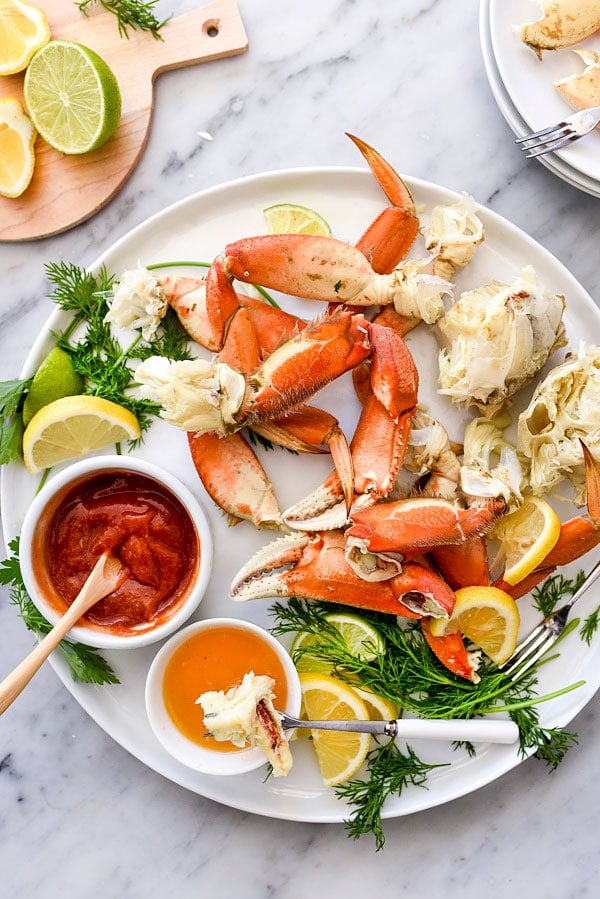When visiting Vancouver Island, one of the most enjoyable activities is crab fishing from shore. Crabbing on Vancouver Island offers both an easy and fun experience, with delicious rewards for those fortunate enough to have a successful catch!
Another exciting coastal activity on Vancouver Island is shellfishing, where you can forage for oysters, collect mussels, dig for clams, and even snorkel for scallops in the summer. If you’re new to shellfishing, check out this beginner’s guide to shellfishing on Vancouver Island.

Types of Crabs on Vancouver Island and Vancouver Area
Southern B.C. waters boast two types of edible crabs: Dungeness Crab and Red Rock Crab. The Canadian Government provides a helpful resource for identification and catch limits.
Dungeness Crab: The larger of the two, Dungeness crabs can reach up to 7 inches in width and are favored for their generous meat content in the body and legs.
Red Rock Crabs (Rock Crabs): Smaller in size with bright red shells and large claws, Red Rock Crabs are equally delicious as Dungeness. Certain locations, such as the pier in Victoria, predominantly yield Red Rock Crabs.
How to ensure your crab catch is legal to keep in Canada

- Check that your crab is a male – they say the underside looks like a lighthouse (male), NOT a beehive (female).
- Check that your crab catch is big enough by measuring the length of the carapace (crab shell) from tip to tip. the easiest way is to buy an inexpensive plastic crab measuring tool.
- Check that the shell is hard. Crabs go through fazes and shed their shells. When their shells are new, they’re soft. Soft-shelled crabs have watery and chemical-tasting meat; refrain from keeping them and allow them to harden their shell for better quality. To check, gently squeeze the widest part of the crab’s shell, which is the carapace or the top shell. A hard shell should feel firm and resistant to the pressure applied by your fingers. In contrast, a soft shell will have some give or feel pliable under your fingers.

The Best Crab Trap (Crab Pot) to Use on Vancouver Island
Crab Pot Cages: When crabbing from a boat, opt for pot traps – large cages with doors that trap crabs inside. Although they can be left for hours, they are relatively expensive, ranging from $40 to $200, and are prone to getting snagged or stolen.
Folding Crab Trap Nets: For pier crabbing, use folding net traps. These lightweight traps offer a fast turnaround, making crabbing more exciting. While they’re affordable and efficient, they need regular monitoring, and their flimsy nature may be susceptible to damage from seals or otters.
Gear for Crabbing on Vancouver Island
- Crab Trap: Choose either a throw net or cage.
- Spool: Use for the line connecting your trap to the boat or dock.
- Bait Bag: Consider using a durable bait bag for better results.
- Zap Straps, Scissors, Pliers: Essential for trap mending.
- Crab Bucket: A regular hardware store bucket works well for holding your catch.
- Crab Measuring Tool: Ensure your crabs meet legal size requirements.
- Wagon or Cart: Optional but useful for hauling around your catch and gear.
The Best Crab Bait for Crabbing on Vancouver Island

Using quality bait is crucial for successful crabbing. Options include chicken backs and necks, fish heads or herring, and canned cat food. Fresh bait is preferable, and it’s recommended to avoid rancid or rotten bait.
Where to Crab From Shore on Vancouver Island
First, ensure you’re crabbing in an open zone. Some areas are closed for rock fish and coral conservation. Check with the Department of Fisheries and Oceans (DFO) to confirm you’re crabbing in an open area, especially if using a boat.
Crabbing Locations:

- Swy-a-lagoon Pier in Nanaimo: Ideal for catching primarily Dungeness crab with the occasional Red Rock crab.
- Victoria Sydney Pier: Known for Red Rock crabs; for Dungeness, try Sooke or Nanaimo.
- James Island Road Wharf (off Mt. Newton X Rd): Best place to catch crab from shore in Saanich, with added flounder fishing opportunities.
- Rotary Park in Sooke: Excellent for catching both Dungeness and Red Rock crabs.
- White Rock Pier (Vancouver Mainland): Magnificent spot for crabbing, but be mindful of designated fishing areas.
How to Set a Throw-Net Crab Trap
Secure your bait in the trap, tie the end to the pier, throw it into the water, wait 15-20 minutes, and pull it up to check for catches. Measure your catch and release it in water just deeper than the crab’s head.
How to clean a live crab

Tools Needed:
- Sharp knife
- Crab crackers or mallet
- Crab picks or seafood forks
- Kitchen shears or scissors
- Cutting board
Steps:
- Humanely Kill the Crab, it’s the law in Canada.
- Place the live crab on a cutting board.
- Locate the center of the crab’s body, just behind the eyes.
- Insert a sharp knife into this spot, ensuring a quick and humane kill.
- Remove the Apron:
- Flip the crab upside down, and you’ll see a triangular-shaped flap called the apron.
- Hold the crab firmly and pull off the apron. Discard it.
- Remove the Top Shell (Carapace):
- Turn the crab right-side up. Lift and twist off the top shell, also known as the carapace. This exposes the internal organs and gills.
- Scrape out the feathery gills (dead man’s fingers) on both sides. They are not edible.
- Remove the Mandibles and Soft Tissues:
- Use your fingers or a small spoon to remove the soft, spongy mandibles and other soft tissues from the center of the crab. Discard these parts.
- Detach the Mouth:
- Detach the mouth by breaking it away from the body and discard it.
- Break the Crab in Half:
- Using a crab cracker or a mallet, carefully break the crab in half along the center.
- Some people prefer to keep the crab whole, while others like to break it into halves or quarters for easier handling.
- Check for the Gills in the Body Sections:
- Look inside each body section for any remaining bits of the feathery gills. Remove them if present.
- Rinse and Clean:
- Rinse the crab under cold running water to remove any remaining debris.
- Optionally, you can brush the crab pieces with a soft brush to remove any particles.
- Ready for Cooking:
- Your Dungeness crab is now cleaned and ready for cooking. Prepare it according to your preferred recipe.
- Your Dungeness crab is now cleaned and ready for cooking. Prepare it according to your preferred recipe.
How to Cook Dungeness and Red Rock Crab

Once cleaned and split in half, boil a large pot of water, throw in the crabs, and leave for 15-20 minutes per two large crabs. Blanch in ice water and serve on ice with hot melted butter.
How to Store Crab After Catching
It’s recommended to cook crab immediately after catching. Store cooked crab in the fridge for 3-4 days. If freezing, remove the meat from shells and vacuum-seal it or prepare dishes like spring rolls, dip, or soup for freezing.
If you have any questions about crabbing in Vancouver or on Vancouver Island, feel free to comment below, and I’ll provide a reply!


